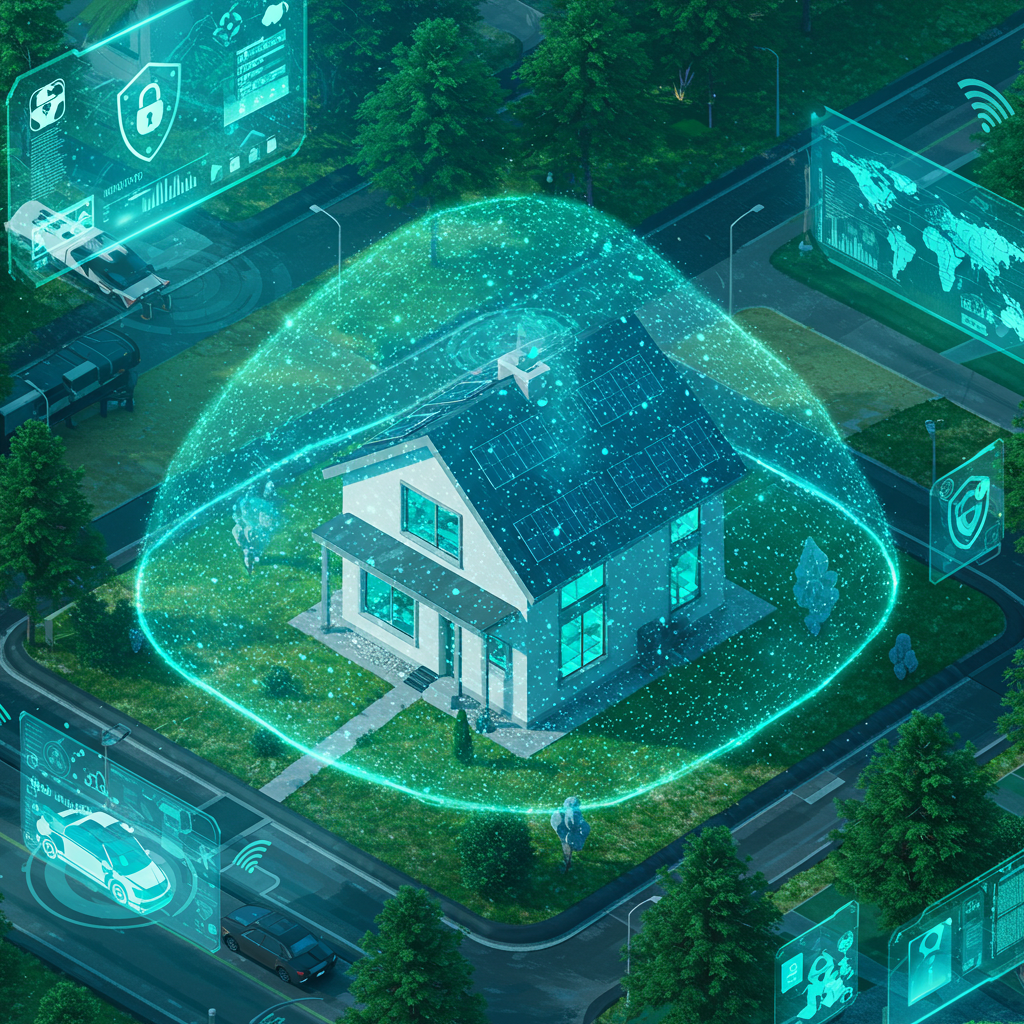A standard home insurance policy in 2025 typically provides coverage for your home, personal property, liability, and additional living expenses in case of damage or loss. It’s important to understand what is covered and what is not, as home insurance policies can vary by provider and location. Here’s a breakdown of the key coverages offered in a standard home insurance policy in 2025:
1. Dwelling Coverage
Dwelling coverage protects the physical structure of your home, including walls, roof, foundation, and built-in systems such as plumbing and electrical. If your home is damaged or destroyed by a covered event (e.g., fire, storm, vandalism), this coverage helps pay for repairs or rebuilding costs.
- What’s Covered: Structural damage to your house due to fire, windstorm, vandalism, theft, or certain natural disasters.
- Exclusions: Earthquakes and floods typically require separate coverage, and general wear and tear are not covered.
2. Other Structures Coverage
This covers structures on your property that aren’t attached to your main home, such as a detached garage, shed, fence, or gazebo. Like dwelling coverage, it typically protects these structures from damage or destruction due to covered events.
- What’s Covered: Damage to detached garages, sheds, fences, driveways, or other structures on your property.
- Exclusions: Wear and tear, and some policies might not cover certain detached structures, so it’s important to confirm specifics with your insurer.
3. Personal Property Coverage
Personal property coverage helps protect your belongings inside your home, including furniture, electronics, clothing, jewelry, and other personal items, if they are damaged, destroyed, or stolen due to a covered event.
- What’s Covered: Items like clothing, furniture, appliances, electronics, and even some high-value items (up to certain limits).
- Exclusions: Damage from neglect, certain valuable items (e.g., expensive jewelry, artwork), and damage caused by events like flooding or earthquakes (unless specifically added).
4. Loss of Use (Additional Living Expenses) Coverage
If your home becomes uninhabitable due to a covered event, loss of use coverage helps pay for temporary living expenses, such as hotel stays, meals, and other costs. This coverage ensures you have a place to stay while your home is being repaired or rebuilt.
- What’s Covered: Temporary accommodation costs, meals, and other expenses incurred while your home is being repaired or rebuilt.
- Exclusions: This coverage is typically only available if the damage is caused by a covered event.
5. Personal Liability Coverage
Personal liability coverage protects you financially if you are legally responsible for injury or property damage to others. It covers legal defense costs and settlements or judgments in case of a lawsuit.
- What’s Covered: Legal fees and expenses if you are sued for causing harm or injury to someone, or if their property is damaged.
- Exclusions: Intentional damage or injury, business-related incidents, and certain high-risk activities may not be covered.
6. Medical Payments to Others
This coverage helps pay for medical expenses if someone is injured on your property, regardless of fault. It typically covers small injuries and medical costs for guests or visitors who may be injured while on your property.
- What’s Covered: Medical expenses for visitors or guests who are injured on your property.
- Exclusions: Injuries sustained by members of your household or people residing in your home.
7. Vandalism and Theft Coverage
This part of your policy protects against damage or loss caused by theft or vandalism. If your property is broken into and items are stolen or damaged, this coverage helps reimburse you for the loss.
- What’s Covered: Theft, burglary, and vandalism-related damage to your property and personal belongings.
- Exclusions: Damage from the theft of property left outside the home or unattended for long periods, or high-value items that are not adequately insured.
What’s Not Typically Covered in a Standard Home Insurance Policy
While a standard home insurance policy provides essential protection, it has some exclusions. Common exclusions include:
- Flood Damage: Floods are usually not covered under standard home insurance policies. Separate flood insurance through the National Flood Insurance Program (NFIP) or private insurers is required in flood-prone areas.
- Earthquakes: Damage from earthquakes is typically not covered, and homeowners must purchase separate earthquake insurance if they live in an area prone to earthquakes.
- Mold and Pest Damage: Damage caused by mold, termites, or other pests is often excluded unless it is the result of a covered peril.
- Intentional Damage: Any damage that you or someone in your household intentionally causes is not covered.
- Maintenance Issues: Standard home insurance policies don’t cover general wear and tear, poor maintenance, or mechanical breakdowns (e.g., broken HVAC systems).
Additional Coverages You Can Add to Your Home Insurance
In 2025, insurers offer the option to add endorsements or riders to your standard policy to cover specific needs. Some common additions include:
- Flood Insurance: As mentioned, floods are not typically covered by standard policies, so purchasing separate flood insurance can help protect against water damage from floods.
- Earthquake Insurance: If you live in an earthquake-prone area, this can be an essential addition to protect your home from earthquake damage.
- Scheduled Personal Property Coverage: This allows you to insure high-value items like jewelry, art, or collectibles for their full value, beyond the standard coverage limits.
- Home Business Insurance: If you run a business from home, you may need additional coverage to protect business equipment, liability, and income loss.
Conclusion
A standard home insurance policy in 2025 covers a wide range of risks, from damage to your home and belongings to liability for accidents that occur on your property. However, it’s important to review your policy and be aware of what is and isn’t covered. Adding optional coverages or riders to your policy can provide extra protection against risks that are not covered by the standard policy, such as flood or earthquake damage. Make sure to assess your needs and consult with an insurance agent to ensure you have the right coverage for your home.





